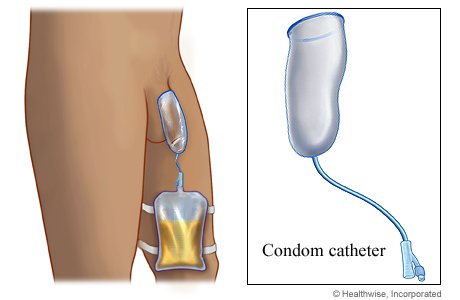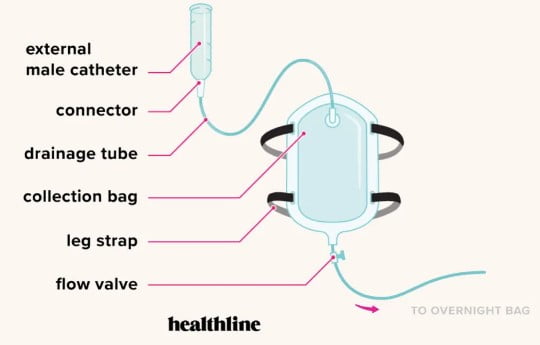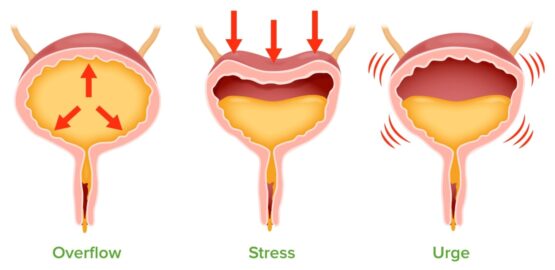Among the multiple medical devices and instruments used in the hospitals as well as among the outpatients daily, catheters are also included. Different types of catheters with varying functionalities are available to choose from. Although most of them are invasive, they come with their side effects and demerits. Moreover, the choice of catheter is also dependent on the patient’s condition as well as the purpose of employment. A relatively newer kind of catheter, called condom catheter, has been introduced in the market which does not need any assistance to use and is completely non-invasive. Let us learn what these condom catheters are and in which cases, they are preferred over other forms of the available catheters.
What are condom catheters?
Condom catheters are the type of catheters that are intended to be used externally over the opening of the urinary tract for the purpose of urine collection. They are named so because they have been placed onto the body like a condom. Male patients who have urinary incontinence are usually advised to use such catheters which can collect all the urine flowing out of the body due to compromised functionality of the muscles of the urinary bladder which have been assigned the job of controlling the bladder and urine passing.

Condom catheter set
Parts of a condom catheter set
A condom catheter set has the following components:

Condom catheter set
Except for the condom catheter, all of the components of this set are reusable after washing.
How to use a condom catheter?
In order to put on a condom catheter, the given steps must be followed:
- Rinse the urinary tract opening with soap and water.
- After thoroughly washing the soap, let the area air dry.
- Check the site to rule out any irritated patches, open wounds, or sores.
- Place the condom catheter onto the urinary tract opening and secure it.
- Hold the catheter in place for 10 to 15 seconds to ensure that it has been affixed.
- Place the sheath holder around the tip of the condom catheter.
- Attach the collection bag to the condom catheter.
- Tie the bag with your lower leg for proper drainage.
Characteristics features of a condom catheter
The condom catheters vary from the other types of catheters owing to their specific characteristics. These notable features include:
- The condom catheters are non-invasivee. they are not to be placed directly into the urinary bladder. This way, these catheters are more convenient to use for the patients.
- These catheters are easy to use and require no medical assistance while being placed. The patient can put these on and replace them on his own. Moreover, they are more comfortable to use for the patient as compared to the invasive ones.
- The incidents of catheter-associated urinary tract infections (CAUTI) are very low as compared to those associated with other catheters such as Foley’s catheter etc.
- The condom catheters are available in different sizes.
Applications of condom catheters
These urine collection devices are a great option for patients who are experiencing any of the following health-related issues:
- Alcohol withdrawal: During alcohol discontinuation, the patients often report altered control of their bladder. Although this state is temporary, the condom catheters can come in handy until the issue is resolved.
- Overactive bladder: In this state, a sudden urge arises to empty one’s bladder. This momentous need often results in the leakage of some of the urinary contents before even reaching the toilet. In such cases, condom catheters can be helpful.
- Mobility issues: People with limited mobility are also recommended to use condom catheters.
- Urinary incontinence: People who have issues with bladder control are more likely to get benefited from condom catheters as they can collect urine in the bag attached to them for a while until the patients get to use the bathroom.

Urinary incontinence and the urge to urinate immediately
- Dementia: In patients with moderate to severe dementia, it is a common occurrence to experience urinary incontinence. Therefore, using a condom catheter can be of great help.
- Quantification of urine: For some tests, your physician might want to evaluate the exact amount of urine that you pass at one time. For this purpose, condom catheters are attached to collect the urine that can be volumetrically measured afterward.
- Urinary tract complications: In cases when the urinary tract has been infected with urinary tract infections (UTIs) or diseases such as bladder stones, spasms, etc., condom catheters can also be employed.
Demerits of condom catheters
Although minor, the condom catheters can also cause side effects just like the others. These problems include:
- Condom catheters can irritate the skin both due to their latex material and the urine contents accumulated in them.
- These catheters can rupture thus spilling the contents out.
- Condom catheters, in case of the wrong size, can fall off the urinary tract opening.
- They can cause pain while being put on or being removed.
Conclusion
A catheter is one of the basic medical devices used by patients on a day-to-day basis. Owing to their diverse employment, multiple types of catheters have been designed and marketed, one of which is the condom catheter. It is a product that is easy to use and comes with minimum side effects. Particularly, the less likelihood of catheter-related urinary tract infections associated with condom catheters has rendered them a convenient and safer option for patients in need.

PhD Scholar (Pharmaceutics), MPhil (Pharmaceutics), Pharm D, B. Sc.
Uzma Zafar is a dedicated and highly motivated pharmaceutical professional currently pursuing her PhD in Pharmaceutics at the Punjab University College of Pharmacy, University of the Punjab. With a comprehensive academic and research background, Uzma has consistently excelled in her studies, securing first division throughout her educational journey.
Uzma’s passion for the pharmaceutical field is evident from her active engagement during her Doctor of Pharmacy (Pharm.D) program, where she not only mastered industrial techniques and clinical case studies but also delved into marketing strategies and management skills.
Throughout her career, Uzma has actively contributed to the pharmaceutical sciences, with specific research on suspension formulation and Hepatitis C risk factors and side effects. Additionally, Uzma has lent her expertise to review and fact-check articles for the Health Supply 770 blog, ensuring the accuracy and reliability of the information presented.
As she continues her PhD, expected to complete in 2025, Uzma is eager to contribute further to the field by combining her deep knowledge of pharmaceutics with real-world applications to meet global professional standards and challenges.







